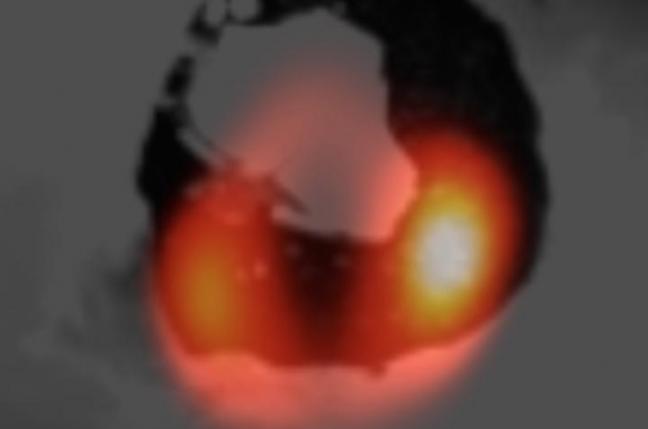New Images Reveal Lava Lake on Jupiter’s Moon Lo
 MOUNT GRAHAM, Ariz., May 5 (UPI) — Researchers have used a ground-based telescope to detail a lava lake on Jupiter’s moon Io. It’s the first time a telescope on Earth has been used to generate sharp images of Io’s geologic features.
MOUNT GRAHAM, Ariz., May 5 (UPI) — Researchers have used a ground-based telescope to detail a lava lake on Jupiter’s moon Io. It’s the first time a telescope on Earth has been used to generate sharp images of Io’s geologic features.
Astronomers were able to gather images of the volcanic depression on the moon’s largest volcano, named Loki after the Norse “god of fire.” When the hard crust of the lava lake periodically sinks, a burst of thermal energy emanates outward as fresh magma rises to the surface.
The energy of the glowing magma can be observed from Earth, but not always in great detail. Thanks to a new imaging technique, however, an international team of astronomers was able to develop a composite image of the crescent-shaped lake of churning magma.
The researchers used a series of mirrors on the Large Binocular Telescope, located in Arizona’s mountains, to combine light in a process called interferometry. The instrument, called the Large Binocular Telescope Interferometer, captured a series of raw images of the newly glowing lake. These raw images, while not very sharp on their own, were combined to reveal Loki’s lake in impressive detail.
“We combine the light from two very large mirrors coherently so that they become a single, extremely large mirror,” Al Conrad, an astronomer at the LBT Observatory and lead author of a new study on the Loki findings, explained in a press release. “In this way, for the first time we can measure the brightness coming from different regions within the lake.”
The new images showed that extremely bright spots appear periodically on the surface of Loki. Each time, the concentrations of thermal energy appear in new locations, suggesting the feature is an especially active overturning laval lake. Io is the most geologically active body in the solar system.
“Studying the very dynamic volcanic activity on Io, which is constantly reshaping the moon’s surface, provides clues to the interior structure and plumbing of this moon,” explained Chick Woodward, an astronomer at the University of Minnesota who assisted in conducting the recent research. “It helps to pave the way for future NASA missions such as the Io Observer. Io’s highly elliptical orbit close to Jupiter is constantly tidally stressing the moon, like the squeezing of a ripe orange, where the juice can escape through cracks in the peel.”
The new images and their scientific implications are detailed in the Astronomical Journal.


